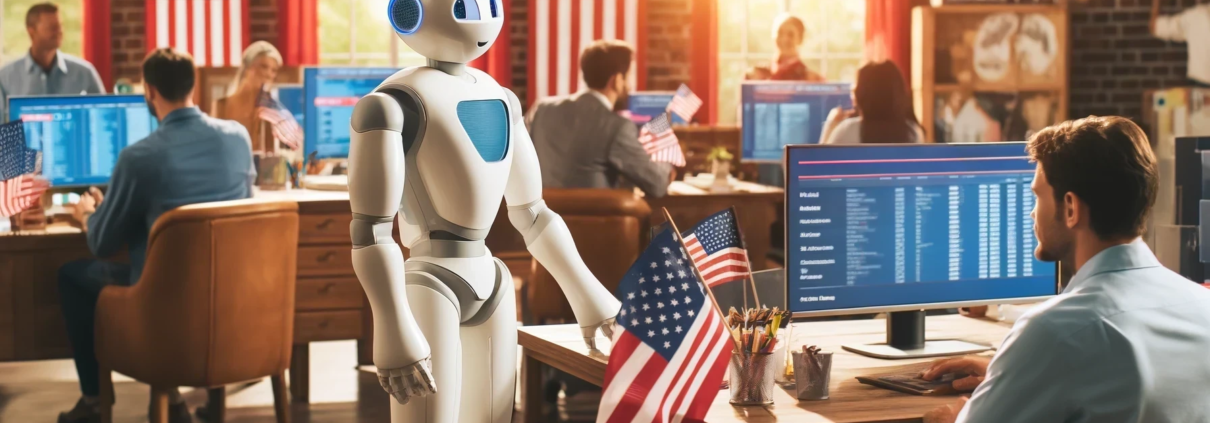Containment, Crumbled
HERE’S WHAT YOU NEED TO KNOW…
The American bunker-busters hit more than Iran’s nuclear sites last Friday — they crumbled the old geopolitical playbook. The U.S. strikes signal a broader strategic inflection point that has been building quietly since the Hamas-led October 7, 2023 attacks. For public affairs professionals navigating an increasingly unpredictable global environment, the implications are profound.
The contours of this new reality aren’t defined by partisan politics or headline-grabbing moments. This signal is a shift in the fundamental approach to foreign policy from containing instability to confronting it decisively. Here’s what you need to know about the new mindset this shift demands to manage risk and reputation on the world stage.
The U.S. Didn’t Start the Fire—And Neither Did Israel
To understand the significance of the recent Iran strike, we have to begin with context. The Islamic Republic of Iran has spent more than four decades cultivating a global network of terrorist proxies—from Hezbollah to the Houthis—designed to inflict damage while shielding Tehran from direct retaliation.
The October 7 massacre in Israel, orchestrated by Hamas and enabled by Iranian training, funding, and coordination, was not an isolated incident. It was a continuation of a 40-year strategy that includes the 1983 bombing of U.S. Marines in Beirut, attacks on American forces in Iraq, and missile strikes that have disrupted global shipping through the Red Sea.
But this time, Iran miscalculated. Its assumption that operating through proxies would insulate it from direct consequences proved false. The Israeli response was immediate and punishing. The American response—culminating in the first combat use of Massive Ordnance Penetrators (MOPs) to degrade Iran’s nuclear capabilities—was equally significant. Iran found itself isolated, even among adversaries like Russia and China, and facing a more direct and credible form of deterrence than it had encountered in years.
How October 7 Changed the Strategic Calculus
Just as 9/11 forced the United States to rethink its national security doctrine, October 7 shifted Israel’s entire posture—from managing instability to eliminating threats. The days of tolerating low-level rocket fire and negotiating with bad-faith actors are over. In this new paradigm, proximity and hostility are treated as intolerable risks.
That shift is reverberating far beyond the Middle East. Ukraine has ramped up cross-border drone strikes inside Russia. Japan is reinterpreting its pacifist constitution to allow for expanded military capabilities. Even the U.S. strike on Iran signals a break from the past: no more tolerating delays in diplomacy while uranium is enriched behind closed doors.
These are not isolated policy decisions. They are symptoms of a broader international move away from ambiguity and toward assertiveness—a pattern public affairs professionals cannot afford to ignore.
Same Stated Goals, New Unwritten Rules
Many of the strategic objectives now shaping global affairs aren’t new. For years, U.S. policymakers across administrations have called out Iran’s nuclear ambitions, pressed NATO allies to shoulder more of the defense burden, and warned of growing risks from an ascendant China. But what’s changed—dramatically—is the method of pursuit.
The Trump administration’s response to Iran is emblematic of this shift. While presidents before him expressed concern about Tehran’s provocations, few took the kind of direct action that might carry unpredictable geopolitical consequences. Authorizing strikes on Iran’s nuclear infrastructure, deploying massive ordnance penetrators, and telegraphing a willingness to escalate reflect not just policy conviction, but a new tolerance for confrontation over consensus.
This playbook extends beyond the Middle East. From the relocation of the U.S. embassy to Jerusalem, to tariffs and tech restrictions aimed at China, to calls for NATO reforms and stricter immigration enforcement—Trump has acted in ways others wouldn’t (for good or ill). The message to allies and adversaries alike: the U.S. is no longer bound by incrementalism.
Other nations are following suit. Japan is rearming. India is strengthening strategic ties with the U.S. Saudi Arabia is continuing normalization talks with Israel, despite regional tensions. Across the board, global leaders are abandoning the assumption that diplomacy must always be slow and consensus driven.
For companies with exposure to these geopolitical shifts, the lesson is clear: don’t mistake strategic continuity for operational predictability. What looks like a familiar objective on paper may play out in radically unfamiliar ways.
Navigating an Era with Fewer Geopolitical Guardrails
In this new reality, public affairs teams should expect more surprises—and fewer guardrails. Assumptions about diplomatic de-escalation or the resilience of multilateral frameworks are increasingly unreliable. The guardrails that once bounded international behavior are breaking down in a structural shift in how states respond to provocation, assert influence, and define strategic red lines.
That has direct implications for business leaders and the teams advising them. Traditional risk frameworks that relied on predictability and de-escalation are proving outdated. Companies operating in or exposed to global markets must be prepared for faster-moving, higher-stakes developments—from drone strikes and proxy escalations to economic realignments and regulatory retaliation.
In a post-containment world, public affairs professionals need to move beyond reactive crisis comms. What’s needed now is strategic foresight—an ability to detect weak signals, anticipate geopolitical triggers, and help leadership teams stress-test plans against a broader range of scenarios.
Delve Research helps clients stay ahead of that curve — arming decision-makers with the intelligence they need to navigate a world where the old playbooks no longer apply. Because, as the era of containment gives way to confrontation, those who can’t see what’s coming next risk being caught flat-footed in the fallout.









